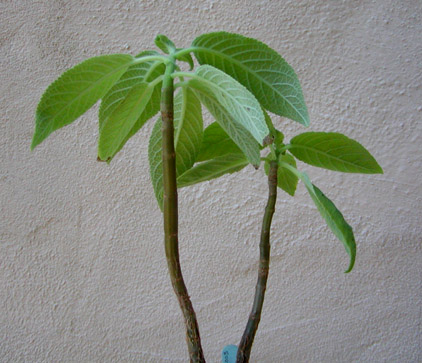
Even Alain Chautems described Paliavana plumerioides as weird. It's got a bare stem with just a few leaves at the top. A xerophyte, it was found alongside small columnar cacti. It is also very slow-growing: 1-2 cm per year in the wild.
The late Jon Lindstrom of Arkansas reported on Gesneriphiles that his plant, started from seed in 2008, bloomed in 2013. He wrote that it apparently required a dry winter dormancy in order to flower. As far as I know, he is the first person in North America to get bloom on this species.
My one surviving plant, shown to the left [picture taken August 2005], was 3.5 years old and 28 cm tall. It is not particularly tolerant of drying out. This plant was started from seed provided by Tsuh Yang Chen.

